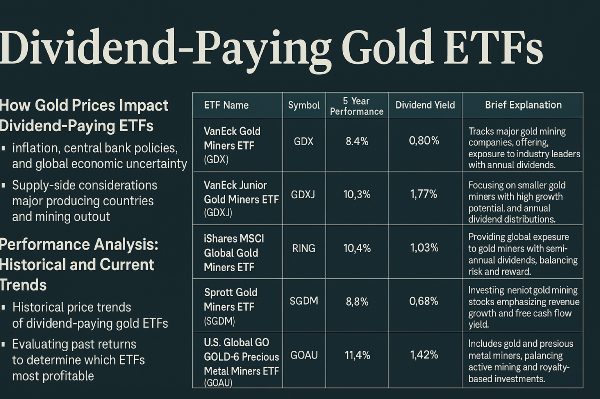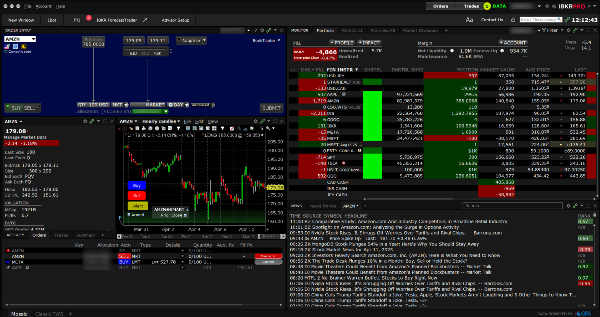Introduction
Large-cap funds invest in companies with substantial market capitalization, typically those with a proven track record of financial stability and consistent performance. These funds appeal to investors seeking long-term growth, as they often provide steady returns and lower volatility compared to smaller-cap investments. Large-cap companies tend to dominate their respective industries, making them reliable choices during market fluctuations. Investors favor these funds for their stability, dividend payouts, and potential for sustained appreciation over time, making them a cornerstone of many long-term investment strategies.
Understanding Large-Cap Funds
Large-cap stocks belong to companies with a market capitalization of $10 billion or more, making them industry leaders with established financial stability. These companies often exhibit lower volatility compared to mid-cap and small-cap stocks, providing investors with a reliable option for long-term growth. Large-cap funds typically include blue-chip stocks known for consistent earnings, strong market positioning, and dividend payouts. Historically, large-cap stocks have demonstrated resilience during economic downturns, maintaining steady returns over extended periods. Investors favor these funds for their ability to balance risk and reward while offering diversification across various sectors.
Advantages of Investing in Large-Cap Funds
Large-cap funds provide investors with stability and lower volatility compared to small-cap and mid-cap funds, making them a reliable choice for long-term investment. These funds typically include well-established companies with strong financial foundations, reducing the risk of sudden market fluctuations. Additionally, large-cap stocks often offer consistent dividend payouts, providing investors with a steady income stream. Their strong market positioning and industry leadership contribute to long-term sustainability, ensuring continued growth potential.
Risks and Challenges
Large-cap funds, while stable, often exhibit lower growth potential compared to small- and mid-cap stocks. These companies are well-established, meaning they may not experience the rapid expansion seen in emerging businesses. Additionally, large-cap stocks can be significantly affected by economic downturns and market corrections, as their broad industry exposure makes them vulnerable to macroeconomic shifts. Another challenge is their limited flexibility in high-growth sectors, where smaller companies may innovate and adapt more quickly. Investors should weigh these factors when considering large-cap funds for long-term portfolios.
Comparing Large-Cap Funds to Other Investment Options
Large-cap funds offer stability and lower volatility compared to mid-cap and small-cap funds, which tend to experience higher growth but also greater risk. Investors often use large-cap funds as a foundation for diversified portfolios, balancing them with mid-cap and small-cap investments to optimize returns while managing risk. Historical case studies demonstrate that portfolios incorporating large-cap stocks have weathered market fluctuations effectively, providing consistent long-term gains. You can explore comparative performance
evaluations.
Strategies for Long-Term Investment
Selecting the right large-cap funds requires evaluating factors such as historical performance, expense ratios, and sector diversification. Investors should consider funds that align with their risk tolerance and long-term financial goals. Portfolio diversification plays a crucial role in managing risk, as combining large-cap funds with mid-cap and small-cap investments can enhance stability while optimizing returns. Understanding market cycles is also essential, as timing investments strategically can help maximize gains and minimize losses.
Tax Considerations
Large-cap funds can offer tax efficiency, particularly when structured to minimize capital gains distributions. Investors should consider funds with lower turnover rates, as frequent trading can trigger taxable events. Capital gains implications vary based on holding periods, with long-term investments generally taxed at lower rates than short-term gains. Additionally, strategies such as tax-loss harvesting and investing in tax-managed funds can help reduce tax burdens. Exchange-traded funds (ETFs) often provide tax advantages due to their unique redemption mechanisms.
Conclusion
Investing in large-cap funds offers long-term stability, lower volatility, and consistent returns, making them a key component of diversified portfolios. These funds primarily include well-established companies with strong financial foundations, reducing the risks associated with market fluctuations. While large-cap stocks may not provide the rapid growth potential of mid-cap or small-cap investments, their steady performance and dividend payouts contribute to reliable wealth accumulation over time. Additionally, tax-efficient investment strategies, such as selecting funds with lower turnover rates and leveraging tax-loss harvesting, can further enhance their value for long-term investors.
To maximize the benefits of large-cap funds, investors should carefully assess fund selection, portfolio diversification, and market timing. Combining large-cap holdings with mid-cap and small-cap funds can create a balanced investment strategy, optimizing returns while managing risk. Understanding economic cycles and strategically adjusting allocations ensures sustained performance in various market conditions. By aligning large-cap investments with individual financial goals and risk tolerance, investors can build resilient portfolios that support long-term wealth growth and stability.



























Introduction
Large-cap funds invest in companies with substantial market capitalization, typically those with a proven track record of financial stability and consistent performance. These funds appeal to investors seeking long-term growth, as they often provide steady returns and lower volatility compared to smaller-cap investments. Large-cap companies tend to dominate their respective industries, making them reliable choices during market fluctuations. Investors favor these funds for their stability, dividend payouts, and potential for sustained appreciation over time, making them a cornerstone of many long-term investment strategies.
Understanding Large-Cap Funds
Large-cap stocks belong to companies with a market capitalization of $10 billion or more, making them industry leaders with established financial stability. These companies often exhibit lower volatility compared to mid-cap and small-cap stocks, providing investors with a reliable option for long-term growth. Large-cap funds typically include blue-chip stocks known for consistent earnings, strong market positioning, and dividend payouts. Historically, large-cap stocks have demonstrated resilience during economic downturns, maintaining steady returns over extended periods. Investors favor these funds for their ability to balance risk and reward while offering diversification across various sectors.
Advantages of Investing in Large-Cap Funds
Large-cap funds provide investors with stability and lower volatility compared to small-cap and mid-cap funds, making them a reliable choice for long-term investment. These funds typically include well-established companies with strong financial foundations, reducing the risk of sudden market fluctuations. Additionally, large-cap stocks often offer consistent dividend payouts, providing investors with a steady income stream. Their strong market positioning and industry leadership contribute to long-term sustainability, ensuring continued growth potential.
Risks and Challenges
Large-cap funds, while stable, often exhibit lower growth potential compared to small- and mid-cap stocks. These companies are well-established, meaning they may not experience the rapid expansion seen in emerging businesses. Additionally, large-cap stocks can be significantly affected by economic downturns and market corrections, as their broad industry exposure makes them vulnerable to macroeconomic shifts. Another challenge is their limited flexibility in high-growth sectors, where smaller companies may innovate and adapt more quickly. Investors should weigh these factors when considering large-cap funds for long-term portfolios.
Comparing Large-Cap Funds to Other Investment Options
Large-cap funds offer stability and lower volatility compared to mid-cap and small-cap funds, which tend to experience higher growth but also greater risk. Investors often use large-cap funds as a foundation for diversified portfolios, balancing them with mid-cap and small-cap investments to optimize returns while managing risk. Historical case studies demonstrate that portfolios incorporating large-cap stocks have weathered market fluctuations effectively, providing consistent long-term gains. You can explore comparative performance evaluations.
Strategies for Long-Term Investment
Selecting the right large-cap funds requires evaluating factors such as historical performance, expense ratios, and sector diversification. Investors should consider funds that align with their risk tolerance and long-term financial goals. Portfolio diversification plays a crucial role in managing risk, as combining large-cap funds with mid-cap and small-cap investments can enhance stability while optimizing returns. Understanding market cycles is also essential, as timing investments strategically can help maximize gains and minimize losses.
Tax Considerations
Large-cap funds can offer tax efficiency, particularly when structured to minimize capital gains distributions. Investors should consider funds with lower turnover rates, as frequent trading can trigger taxable events. Capital gains implications vary based on holding periods, with long-term investments generally taxed at lower rates than short-term gains. Additionally, strategies such as tax-loss harvesting and investing in tax-managed funds can help reduce tax burdens. Exchange-traded funds (ETFs) often provide tax advantages due to their unique redemption mechanisms.
Conclusion
Investing in large-cap funds offers long-term stability, lower volatility, and consistent returns, making them a key component of diversified portfolios. These funds primarily include well-established companies with strong financial foundations, reducing the risks associated with market fluctuations. While large-cap stocks may not provide the rapid growth potential of mid-cap or small-cap investments, their steady performance and dividend payouts contribute to reliable wealth accumulation over time. Additionally, tax-efficient investment strategies, such as selecting funds with lower turnover rates and leveraging tax-loss harvesting, can further enhance their value for long-term investors.
To maximize the benefits of large-cap funds, investors should carefully assess fund selection, portfolio diversification, and market timing. Combining large-cap holdings with mid-cap and small-cap funds can create a balanced investment strategy, optimizing returns while managing risk. Understanding economic cycles and strategically adjusting allocations ensures sustained performance in various market conditions. By aligning large-cap investments with individual financial goals and risk tolerance, investors can build resilient portfolios that support long-term wealth growth and stability.